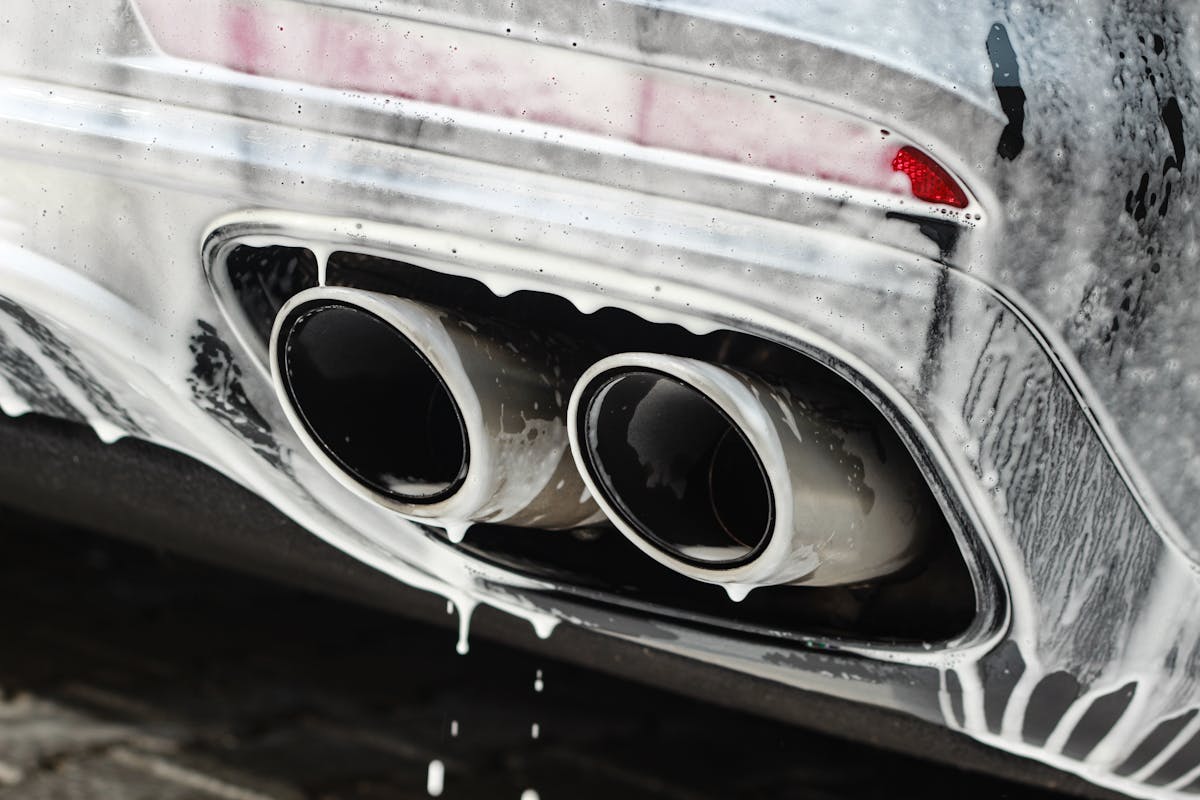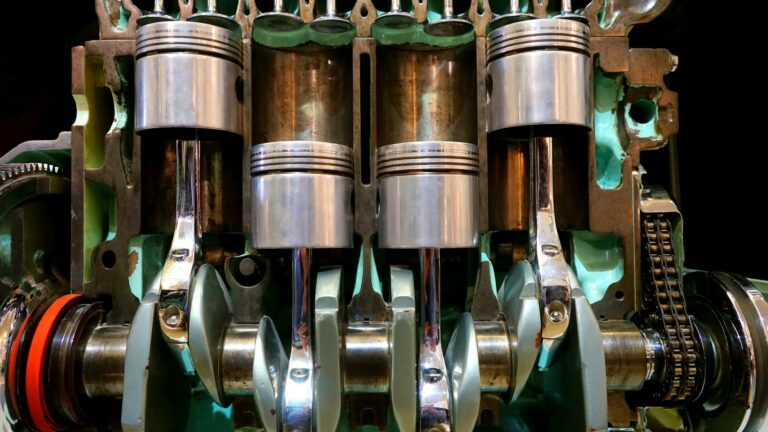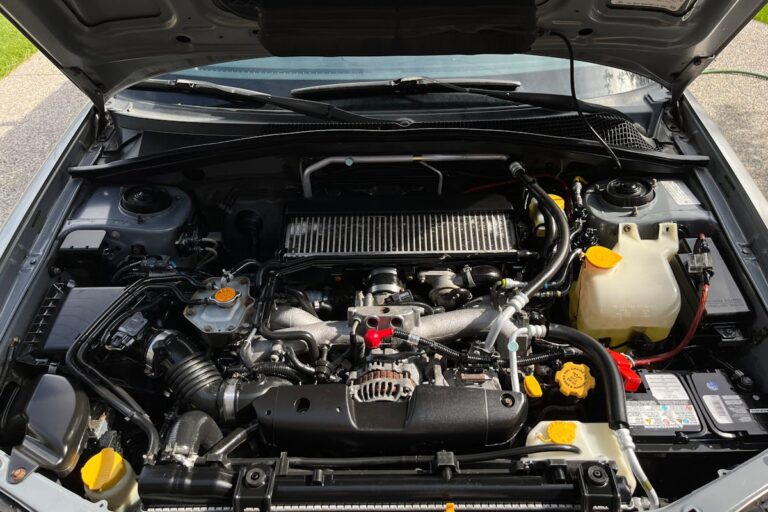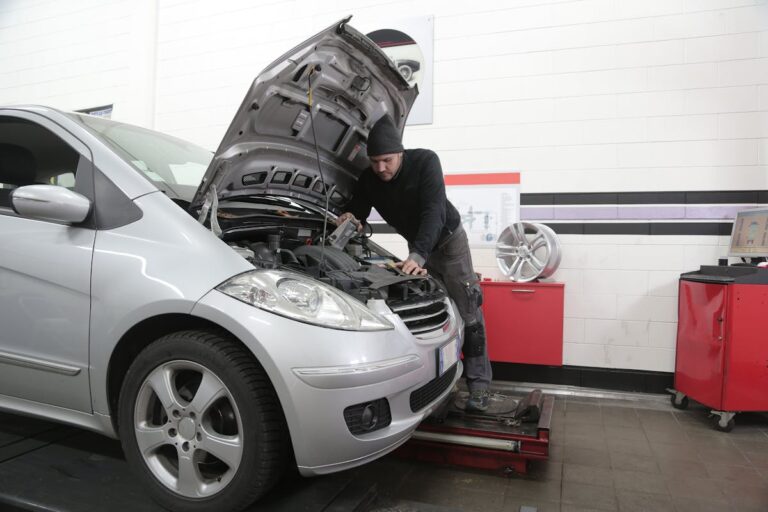How to Clean Exhaust
A vehicle’s exhaust system plays a critical role in its overall performance, fuel efficiency, and emissions output. Consequently, regular maintenance, specifically cleaning, is non-negotiable. However, the process of exhaust cleaning is often misunderstood or overlooked by many vehicle owners. In the following discussion, we will set out on a thorough exploration of the steps and tools required to effectively clean an exhaust system. This knowledge will prove to be invaluable in optimizing your vehicle’s performance and extending its lifespan.
Understanding Your Exhaust System
The exhaust system, a key player in your vehicle’s overall performance, is more than just a piping network. It is a complex assembly of diverse components, each with a specific function. Understanding these exhaust components and the materials they are made of is the first step in maintaining your exhaust system effectively.
The exhaust system mainly comprises of the exhaust manifold, oxygen sensors, catalytic converter, resonator, muffler, and tail pipe. The exhaust manifold collects gases from the engine’s cylinders and directs them to the rest of the exhaust system. Oxygen sensors monitor the level of oxygen in these gases and adjust the air-fuel mixture accordingly. The catalytic converter reduces harmful emissions by converting them into less harmful substances. The resonator and muffler minimize noise produced by the exhaust, while the tail pipe discharges the final exhaust gases.
Exhaust materials are chosen for their durability and resistance to heat and corrosion. Common materials include stainless steel, aluminized steel, and cast iron. Understanding these components and materials is essential for diagnosing problems and performing maintenance on your exhaust system.
Importance of a Clean Exhaust
Maintaining a clean exhaust is crucial for the overall health and efficiency of your vehicle. Over time, the exhaust system accumulates deposits of carbon and other residues, which can clog the pipes and impede the exhaust flow. This hinderance can lead to a significant drop in exhaust efficiency, with potential repercussions on fuel economy and the general performance of your vehicle.
Within the sphere of emission reduction, a clean exhaust is of utmost importance. The exhaust system plays a critical role in filtering out harmful gases produced by the engine. However, a dirty, clogged exhaust can’t perform this function effectively, leading to an increase in the release of pollutants into the environment. This not only contradicts environmental regulations but also poses a threat to public health.
Regular cleaning and maintenance of your vehicle’s exhaust system is, consequently, a practice that car owners should not take lightly. It is a technical task, but with the right knowledge and tools, it is doable. Not only does it contribute to the smooth operation of your vehicle, but it also goes a long way in promoting cleaner, healthier air for all.
Gathering Necessary Cleaning Tools
Before starting on the task of cleaning your exhaust, it is critical to gather the necessary tools. Key tools for this process include a degreaser, a wire brush, and protective gloves. Understanding the function of each tool and adhering to safe handling practices guarantees an efficient and risk-free cleaning process.
Identifying Essential Tools
One cannot underestimate the importance of having the right tools when it comes to cleaning your exhaust. A meticulous approach towards tool selection is vital in exhaust maintenance. The right tools will not only make the cleaning process easier but also guarantee it is done effectively, thereby extending the life of your exhaust system.
Firstly, a good quality wire brush is essential for removing soot and carbon build-up in your exhaust. The brush should have firm, tightly packed bristles and a sturdy handle for maximum cleaning efficiency.
A degreaser or exhaust cleaning solution is another important tool. These chemicals help break down stubborn dirt and grime. Always opt for non-abrasive and non-corrosive cleaners to avoid damaging your exhaust.
A high-pressure washer is also recommended for an efficient cleaning process. With its powerful water jets, it helps dislodge stubborn debris from the exhaust pipe and muffler.
Lastly, a set of reliable mechanics gloves and safety goggles are necessary to protect your hands and eyes from harmful chemicals and debris during the cleaning process.
Safe Tool Handling
Having identified the necessary tools for exhaust cleaning, it is paramount to understand the safe handling of these tools. Without proper handling, you can inadvertently damage your tools, your vehicle, or even yourself. Safety gear is essential in this process; it is important to protect yourself from potential harm.
Proper tool organization is another aspect to reflect on in safe tool handling. By correctly organizing your tools, you can prevent accidents caused by misplaced equipment. Here are some tips for secure and efficient tool organization:
- Keep your tools in a toolbox or a tool belt. This provides easy access and prevents misplacement.
- After use, clean and return each tool to its designated place. This maintains their condition and guarantees they’re easily located for future use.
- Label your tools and their respective storage spaces. This helps in easy identification and proper placement.
Remember to always wear safety gear such as gloves and safety glasses when handling tools. This prevents injuries from sharp objects and debris. Finally, never rush when handling tools. Take your time to verify you are using each tool correctly and safely. Proper tool handling is not just about organization, but also about maintaining safety and extending the life of your tools.
Preparing Your Vehicle for Cleaning
Before initiating the cleaning process, it is critical to guarantee that you have collected all essential cleaning supplies to avoid any interruptions. The next step is to take appropriate precautions to secure both yourself and your vehicle, which might include wearing protective gear and using a vehicle cover. Finally, a thorough inspection of the exhaust’s current condition will provide a clear understanding of the extent of cleaning required.
Gathering Essential Cleaning Supplies
To guarantee a thorough and effective exhaust cleaning, assembling the necessary cleaning supplies is an essential first step. The quality and type of your tools and cleaning solutions can greatly impact the results. Consequently, it’s vital to select items that are designed for the job and are proven to be effective.
When it comes to cleaning solutions, not all are created equal. Some are harsh and can damage your exhaust, while others might not be potent enough to remove the built-up soot and carbon deposits. As a result, it’s important to opt for cleaning solutions that are specifically designed for exhaust systems.
To make the task easier and more efficient, consider the following recommendations:
- Automotive Degreaser: A high-quality degreaser can break down the tough grime and grease accumulated in your exhaust.
- Wire Brushes: These are essential for scrubbing off stubborn deposits. Brushes with brass bristles are particularly effective.
- Eco Friendly Options: For the environmentally conscious, there are several eco-friendly cleaning solutions available. They are not only safe for you but also minimize harm to the environment.
Safeguarding Yourself and Vehicle
Your vehicle’s safety, as well as your own, is of paramount importance when preparing for exhaust cleaning. Before commencing the process, it is essential to take certain safety precautions to prevent any unexpected incidents. These include wearing protective clothing such as gloves and safety glasses, guaranteeing the vehicle is securely parked on level ground, and disconnecting the battery to prevent accidental ignition during the cleaning process.
Vehicle maintenance plays a significant role in safeguarding your automobile. Be sure to check fluids, brakes, and tires regularly. Regular maintenance reduces the risk of potential hazards during the exhaust cleaning.
It is also advisable to cool down the exhaust system before cleaning. A hot exhaust can cause severe burns if touched inadvertently. Allow the engine to cool down for at least an hour before starting the cleaning process.
Lastly, make sure of proper ventilation. Exhaust cleaning can release harmful fumes. Consequently, it is best to perform this task outdoors or in a well-ventilated area to avoid inhalation of these potentially harmful gases. Safety should always be the first consideration when performing vehicle maintenance tasks such as exhaust cleaning.
Assessing Exhaust’s Current Condition
Having taken the necessary precautions to guarantee both personal and vehicle safety, the next step in the exhaust cleaning process is to accurately assess the current condition of the exhaust system. A thorough inspection is a critical stage, as it will determine the methods necessary for effective cleaning.
During this assessment, look for signs of: – Exhaust corrosion – Exhaust discoloration – Physical damage or deformities
Exhaust corrosion is often a consequence of frequent short trips, which prevent the exhaust system from reaching its ideal operating temperature, thereby causing acidic condensation. This can be identified by a rust-brown coloration and flaky texture on the exhaust pipe.
Exhaust discoloration, on the other hand, is usually a telltale sign of overheating. Blue or purple discoloration is an indication that the exhaust system has been subjected to extreme heat.
Physical damages or deformities, such as dents or cracks, can inhibit the exhaust’s performance. These can be the result of road debris or a collision.
Understanding these signs and their implications will allow for a more targeted and effective cleaning approach, ensuring the longevity and ideal performance of the exhaust system.
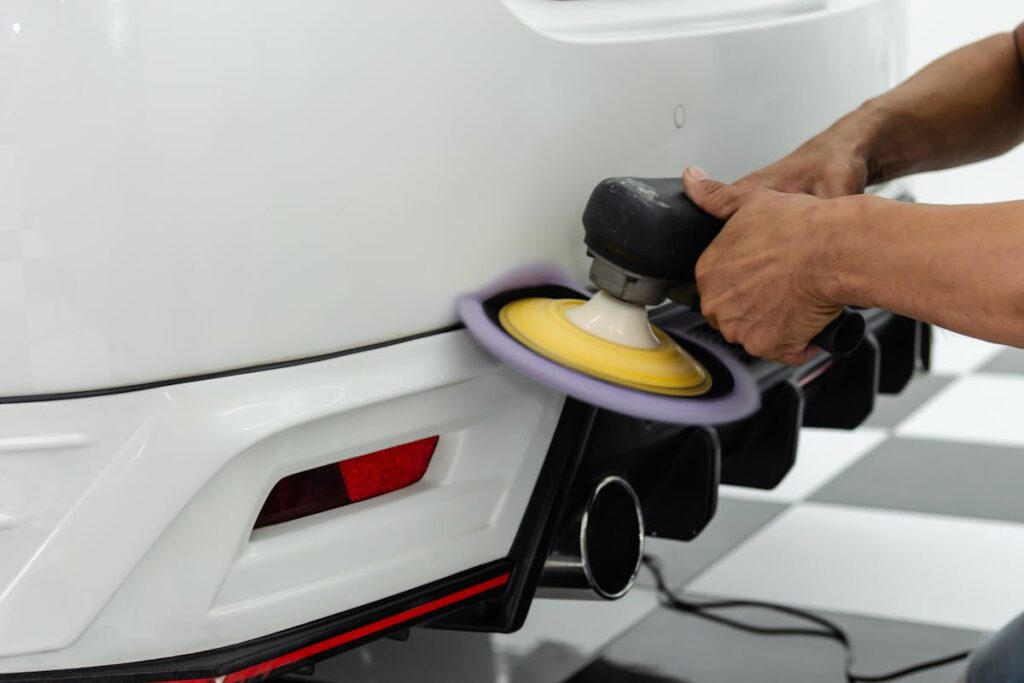
Step-by-Step Exhaust Cleaning Process
Kickstarting the exhaust cleaning process requires a meticulous approach and a keen understanding of the task at hand. This process varies depending on the exhaust system types—whether single or dual, standard or high-performance. Each type requires a different level of care and cleaning frequency.
Start by visually inspecting the exhaust. Look for signs of excessive soot, rust, or damage. Next, remove the exhaust from the vehicle, if possible. For a thorough cleaning, the exhaust system must be completely disassembled.
Proceed by soaking the exhaust components in a cleaning solution specifically designed for exhaust systems. Submerge the parts for a prescribed period, allowing the solution to dissolve the built-up grime and soot. After soaking, scrub the parts with a non-abrasive brush to remove any stubborn residue. Rinse thoroughly and let them dry.
Reassemble and reinstall the exhaust system, ensuring all components fit snugly without any leaks. The cleaning frequency depends on the type of exhaust system and how often the vehicle is used. As a rule of thumb, a standard exhaust system should be cleaned every six months to maintain optimum performance.
Tips for Effective Exhaust Cleaning
Proper maintenance of an exhaust system extends beyond simple cleaning. In fact, effective exhaust cleaning methods involve careful attention to detail and the right tools. Adhering to these tips will guarantee your exhaust system maintenance is efficient and effective.
To begin with, always use a wire brush to scrub off stubborn dirt and carbon deposits. This tool can reach narrow areas and remove grime that ordinary cleaning tools cannot. Next, using a specialized exhaust cleaning solution can also be beneficial. These solutions are specifically designed to break down the grease and carbon deposits in exhaust systems. Finally, always rinse the exhaust thoroughly after cleaning to make sure no residue or cleaning solution is left behind.
To recap:
- Use a wire brush for stubborn dirt and carbon deposits
- Utilize specialized exhaust cleaning solutions
- Rinse thoroughly after cleaning
Adhering to these tips will not only guarantee your exhaust system is clean, but it will also prolong its life and performance. Remember, exhaust system maintenance is about more than just cleaning; it’s about preserving the longevity and functionality of the system.
Maintaining Your Exhaust Post-Cleaning
After a thorough cleaning of your exhaust system, it’s essential to implement regular maintenance routines to guarantee its longevity and peak performance. These exhaust maintenance tips will help to extend the lifespan of your exhaust system and make certain that it continues to function at its best.
One important step in maintaining your exhaust post-cleaning is undertaking regular inspections. These should ideally be carried out every six months to a year, depending on your vehicle’s use and the driving conditions it’s exposed to. Regular inspections allow for early detection of any potential issues and therefore, timely intervention to prevent further damages.
Use a flashlight to inspect the exhaust system for signs of rusting, cracks, or holes. Pay particular attention to the exhaust manifold and pipes. If you notice any unusual noises, such as rattling or hissing, it could be a sign that your exhaust system requires further attention.
Another key aspect of exhaust maintenance is making sure that all components are secure and properly connected. Check the exhaust mounts and hangers for wear and replace them if necessary. Additionally, always use the right tools and wear protective gear when performing maintenance tasks on your exhaust system.
Potential Issues With Neglected Exhausts
While the maintenance of an exhaust system may seem like a minor concern, neglecting it can lead to significant issues that can impair your vehicle’s performance and safety. Maintenance neglect can result in rust buildup and exhaust corrosion, which can subsequently cause performance degradation.
Neglected exhaust systems can lead to:
- An increase in noise: This is often a result of exhaust corrosion, which can create holes in the exhaust system, leading to a noise increase.
- Engine strain and reduced fuel efficiency: Performance degradation due to a faulty exhaust system can force your engine to work harder, causing additional strain and reducing fuel efficiency.
- Emissions rise: A neglected exhaust can increase harmful emissions, negatively impacting the environment and potentially causing your vehicle to fail emissions testing.
It’s worth noting that these issues are not just inconveniences; they can also pose serious safety risks. For instance, a corroded exhaust system can leak harmful gases into your vehicle’s cabin. Hence, regular maintenance and cleaning of your exhaust system is essential to prevent these potential issues.
Frequently Asked Questions
Can a Dirty Exhaust Affect My Vehicle’s Fuel Efficiency?
Yes, a dirty exhaust can impact your vehicle’s fuel efficiency. Accumulated exhaust buildup can restrict airflow, causing inefficiency in fuel combustion. This results in higher fuel consumption, negatively affecting your vehicle’s overall fuel efficiency.
Can I Use Household Cleaning Products for Exhaust Cleaning?
While household alternatives may be available, their cleaning effectiveness on exhaust systems is questionable. It’s advisable to use professional products designed for this purpose to guarantee thorough cleaning and avoid potential damage.
How Often Should I Clean My Car’s Exhaust?
The frequency of exhaust cleaning depends on usage and environment. However, monthly checks are advisable. For ideal performance, follow exhaust maintenance tips and consider a thorough cleaning every 6 to 12 months.
Can a Professional Mechanic Provide Better Exhaust Cleaning?
Yes, a professional mechanic can offer superior exhaust maintenance. Their expertise and access to specialized tools guarantee thorough cleaning, addressing all components effectively. Professional services also include checks for potential issues, guaranteeing overall exhaust system health.
Are There Certain Weather Conditions Best for Exhaust Cleaning?
Ideal weather conditions for such tasks typically involve mild, dry conditions. Humidity and extreme temperatures can affect cleaning techniques, potentially hindering the effectiveness of the solutions used in the cleaning process.
